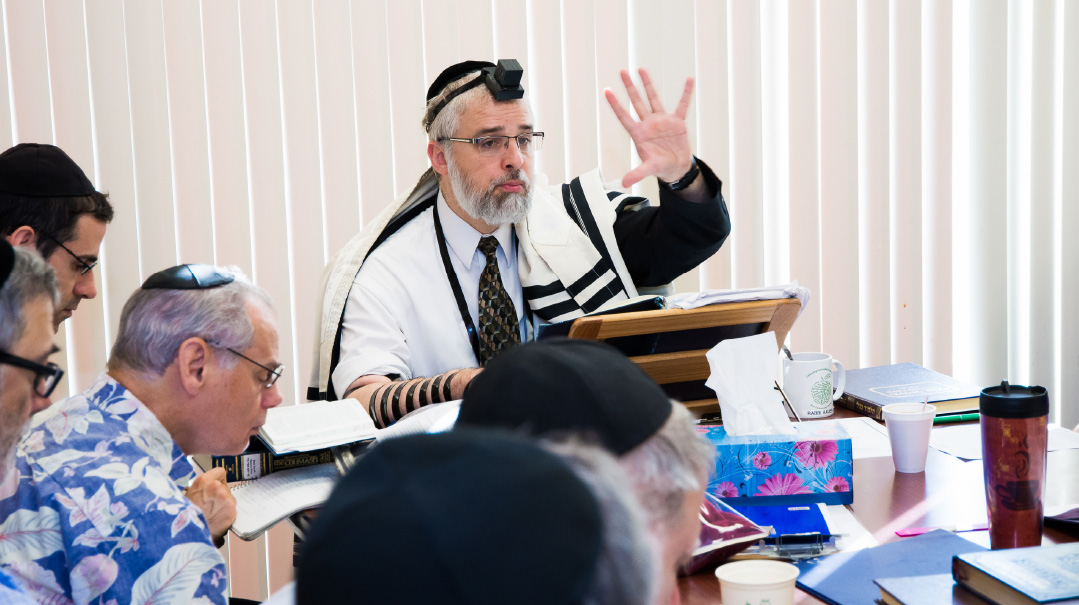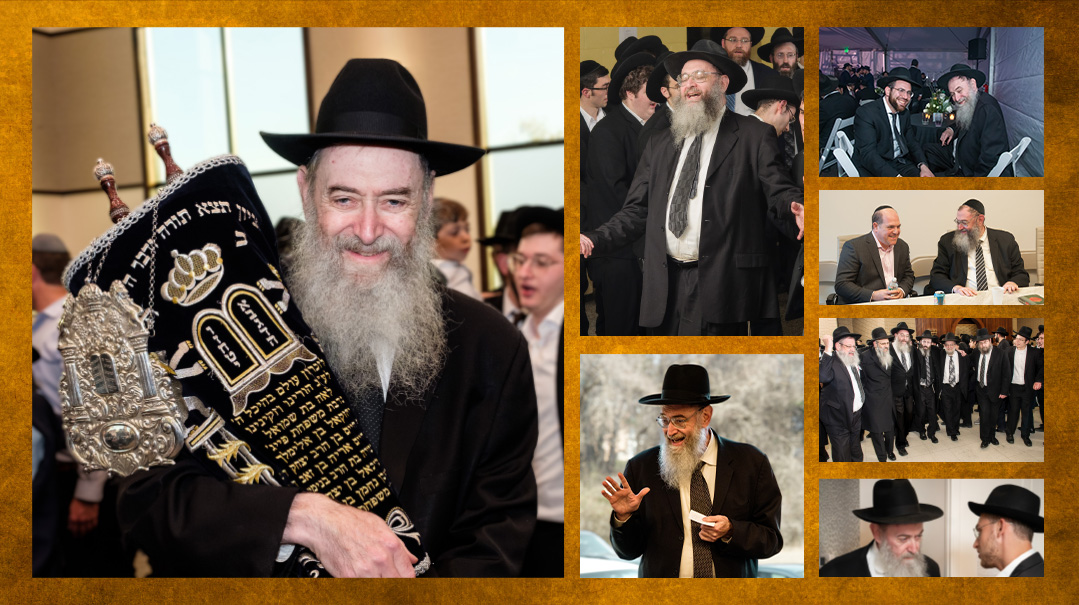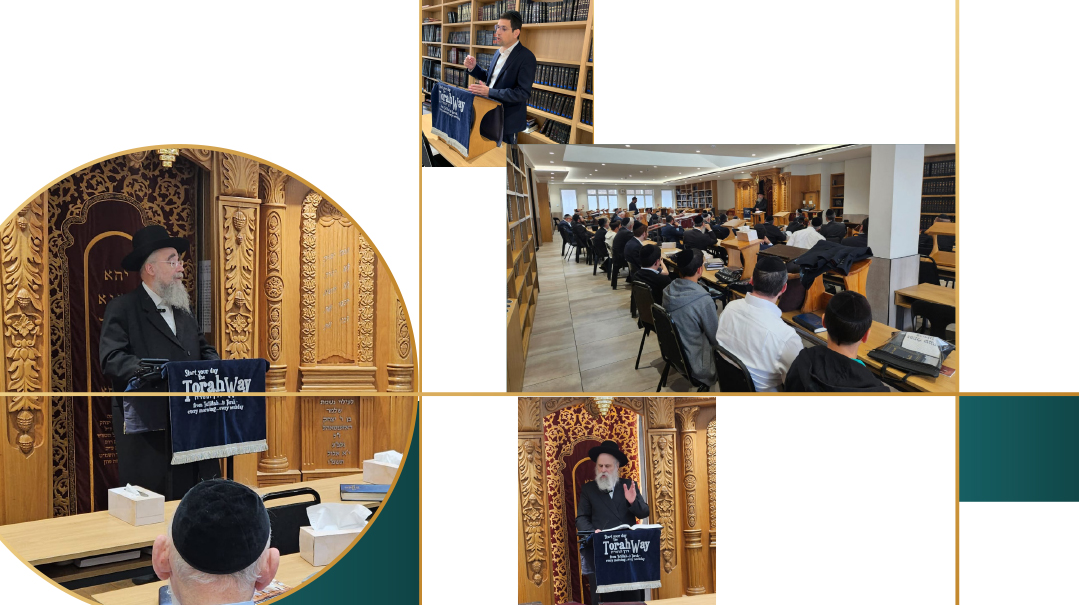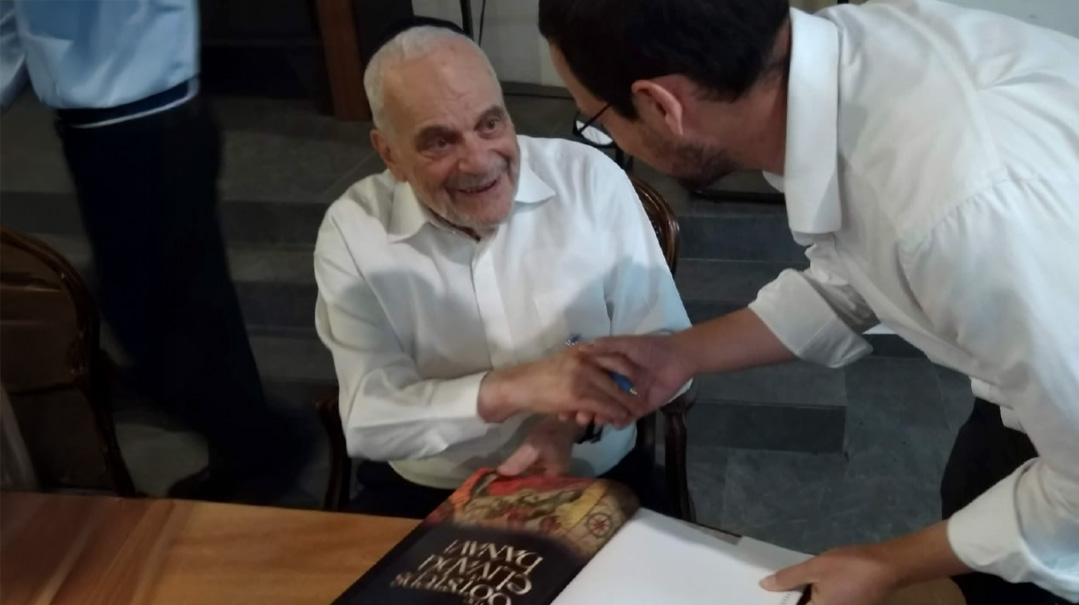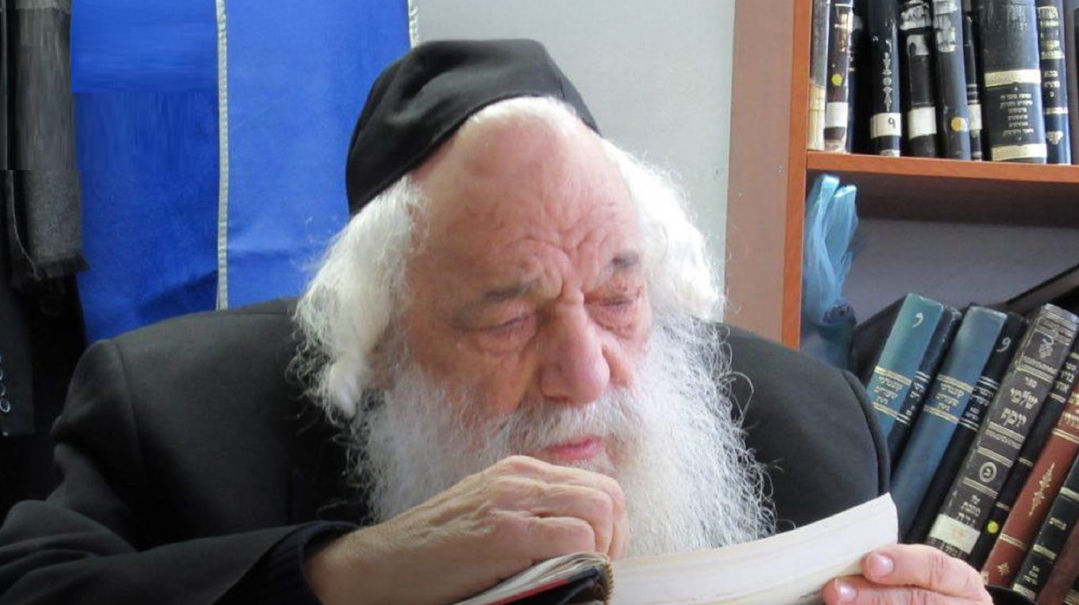Left without a Shepherd
| July 9, 2024The Kossover Rebbe tackled the thorniest issues dragging down the generation while pulling thousands to the Heavens
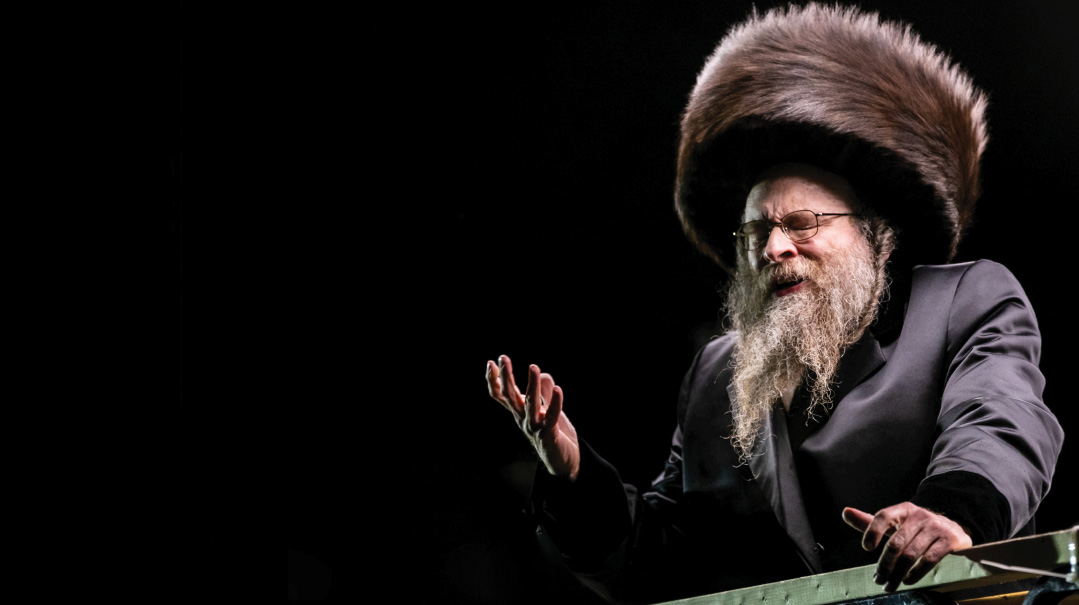
Photos: Mishpacha archives
Every summer, when frum communities in the greater New York area fled north to the Catskills, the Kossover Rebbe, Rav Shraga Feivish Hager ztz”l, flew east — to Jerusalem.
He would head out in the evening for the Kosel. Finding his shtender, he would sit down and open sifrei Kabbalah, remaining there for hours. Often he would fix his gaze on the stones of the Kosel, commiserating with the Shechinah’s distress. He yearned with his whole being for the Geulah, deep in thought, occasionally weeping.
As hundreds of mispallelim began to arrive toward dawn, dragging shtenders and chairs, the Kossover Rebbe remained riveted in place, his features still furrowed in concentration.
This summer, that shtender will sit empty. Only now are people becoming aware of what they’ve lost.
Those all-night vigils open one narrow window onto the multifaceted life of the Kossover Rebbe. As the rest of frum society took summer vacation, the Rebbe just moved his office to another locale. But throughout the year, around the clock, he remained on call.
He was born on 18 Teves/January 10, 1958, in Boro Park, where his father, the Kossov-Zalishchik Rebbe, Rav Avraham Yehoshua Heshel Hager ztz”l, had his beis medrash. He learned in Yeshivas Be’er Shmuel in Boro Park, eventually moving to Bnei Brak to learn in Ponevezh and Chachmei Lublin, where he was noticed by Rav Shmuel HaLevi Wosner. The young man merited to be a ben bayis in Rav Wosner’s home. It was also where he began to study hora’ah.The Shevet HaLevi selected him as chassan for his granddaughter Sarah Rochel, the daughter of Rav Chaim Meir Wosner.
The young couple lived near Rav Chaim Kanievsky in Bnei Brak. There, the chassan attended the tishen of his cousin, the Yeshuos Moshe of Vizhnitz, eventually forming a bond. At the request of his mother, the Rebbetzin of Kossov-Zalishchik, the Yeshuos Moshe tested the young man on Ketzos Hachoshen and was very impressed with his knowledge.
After a number of years, the couple returned to America to be near the Kossov-Zalishchik kloiz. Young Rav Hager became renowned as a fiery chassidic mashpia, and he spent a lot of time with the Toras Mordechai of Vizhnitz-Monsey. In 5751, he was appointed to serve as the rav and dayan of the Vizhnitz community in Boro Park, and from then, he became known as a moreh hora’ah in America.
When his father was niftar in 1999, he succeeded him, taking the title Kossover Rebbe. People were drawn to this thin, ascetic Rebbe with fiery eyes that opened a window onto a lofty world. The Rebbe’s Torah, which demanded a lot from his listeners, soon drew throngs to his long tishen to hear his divrei Torah.
His words were not always easy to understand, laced as they were with deep and esoteric Kabbalistic concepts. Thousands who yearned to rise to a world of purity and truth were drawn to him. The tishen soon had to be moved from the beis medrash to the more spacious Bais Rochel hall in Boro Park; even there, the bleachers were quickly filled.
The Rebbe gained renown as a posek and a dayan, as well as a reputation of being fearless to take on thorny halachic challenges presented by modern dilemmas. He developed a long-standing working relationship with Chesed Shel Emes, which was dealing with HIV-related issues as early as the 1980s. He also took strong stands during the Covid pandemic, urging people to daven in socially distant backyard minyanim.
When the Rebbe urged men to abstain from daily immersion in a mikveh, one person objected that he had never missed a day since his bar mitzvah. The Rebbe was said to have replied, “G-d doesn’t care about the Guiness Book of World Records.”
Already as a youth, the Rebbe was known to seek out holiness, investing himself in fervent tefillah. He would later publish two volumes on tefillah titled Avda D’Malka, which became widely popular among chassidic mevakshim.
“When I reached bar mitzvah age,” he once related, “I took upon myself to abandon the trivialities of this world, not to take an interest in them and not to pursue them.”
A frequent theme of the Rebbe’s Torah was the sanctity of Shabbos. He would constantly exhort his listeners to bask in the glow of Shabbos, and he would delve into deep secrets of the holy seventh day. In his final years, the Rebbe published two volumes titled Shabbos Malka Kaddisha. Anyone who witnessed the Rebbe’s Shabbos in his beis medrash could testify to the fire with which he served his Creator on that day.
Rabbi Yosef Meir Hass, a well-known writer and researcher of chassidus who merited to be very close to the Kossover Rebbe ztz”l, shares a glimpse into what attracted him.
“I was a young bochur of just 16 at the time,” Hass relates. “One Friday night, as I was walking in Yerushalayim, I heard singing. I followed it until I came upon an amazing scene. The Rebbe was sitting on a plastic chair, on the street corner, surrounded by about twenty young men. He had them all singing lofty niggunim of Shabbos, igniting their souls.”
Hass was enthralled. He would have many long, deep conversations with the Rebbe, traveling to Jerusalem every summer to spend Shabbos with him.
“Once, I wanted to speak with him about something, and I came into his dining room,” he relates. “To my surprise, I found him sitting at the table, without a kapote or hat. He was wearing woolen tzitzis and slippers, and he was immersed in a sefer by the Rema MiPano. He didn’t even notice that I’d come in.”
This wasn’t a one-off incident. The Kossover Rebbe was also known for his extreme humility. He didn’t have gabbaim in the usual sense, as the term is used in the chassidic community. The people who functioned in that role for him were volunteers drawn from his followers.
Common protocol in chassidic shtiblach calls for the shaliach tzibbur to wait to begin the chazaras hashatz until the rebbe has finished his silent Shemoneh Esreh. But the Kossover Rebbe would have none of that. If he became aware that the shaliach tzibbur was waiting for him, the Rebbe would motion to him to continue without him.
“Sometimes, especially in the days leading up to Shavuos, the Rebbe would be immersed in learning for 14 hours straight,” says Rabbi Hass. “Right after Shacharis, he would delve into a pile of seforim, and toward Minchah, with shkiah at around 9 p.m., the gabbaim would come in and find him in the same position.”
But that is not to say that the Rebbe made himself inaccessible. People would approach him on the street, knock on his front door, call him on the phone from early morning to late at night — and the Rebbe would always answer, never turning anyone away. No matter how complex or arcane the issue, the Rebbe would always try to give a psak or eitzah. Although his illness slowed him down, he still made himself available.
Rabbi Hass relates, “A renowned Boro Park posek recently asked one of the Rebbe’s meshamshim, ‘For several months now, I’m getting a lot more very complicated cases. What happened?’ The answer was simple — ‘The Kossover Rebbe is sick.’
“And now, Boro Park has been left without a shepherd.”
Each year, ahead of the Three Weeks, the Rebbe left his home in Boro Park and came to Eretz Yisrael for what might be termed a “working vacation” —exhausting learning sessions at the Kosel, long trips to kivrei tzaddikim. Those trips gained him a following in Eretz Yisrael every bit as devoted as his chassidim in America. In recent years, he traveled with them to ancient Shilo.
“The Rebbe had a very strong emotional bond with the Makom Hamikdash,” Rabbi Hass relates. “In recent years, the Rebbe heard in the name of Rav Moshe Mordechai of Lelov zy”a, that the souls of the Avos and Imahos dwell at the Kosel at Kabbalas Shabbos. When he learned this, he began to come to the Kosel many hours before Shabbos began and conducted a special avodah there. The Rebbe would pace back and forth in the plaza with his emotions and disquiet showing on his face. From time to time he walked over to the stones of the Wall and leaned on them longingly. It was awe-inspiring. Anyone who saw it cannot forget it.”
Rabbi Hass notes that the Kossover Rebbe took on this practice of visiting Eretz Yisrael in the summer from Rav Moshe Wolfson ztz”l, who also passed away the same week as he did. “Rav Wolfson, with whom the Rebbe was very close, began this tradition, and the Rebbe followed suit.”
Last week, chassidic Jewry in America bid farewell to two of its greatest lights, as the Kossover Rebbe and Rav Moshe Wolfson passed away days apart.
A quiet crowd of thousands escorted the Rebbe through the streets, living testimony to the tremendous impact he had on their souls.
Zechuso yagen aleinu.
(Originally featured in Mishpacha, Issue 1019)
Oops! We could not locate your form.

